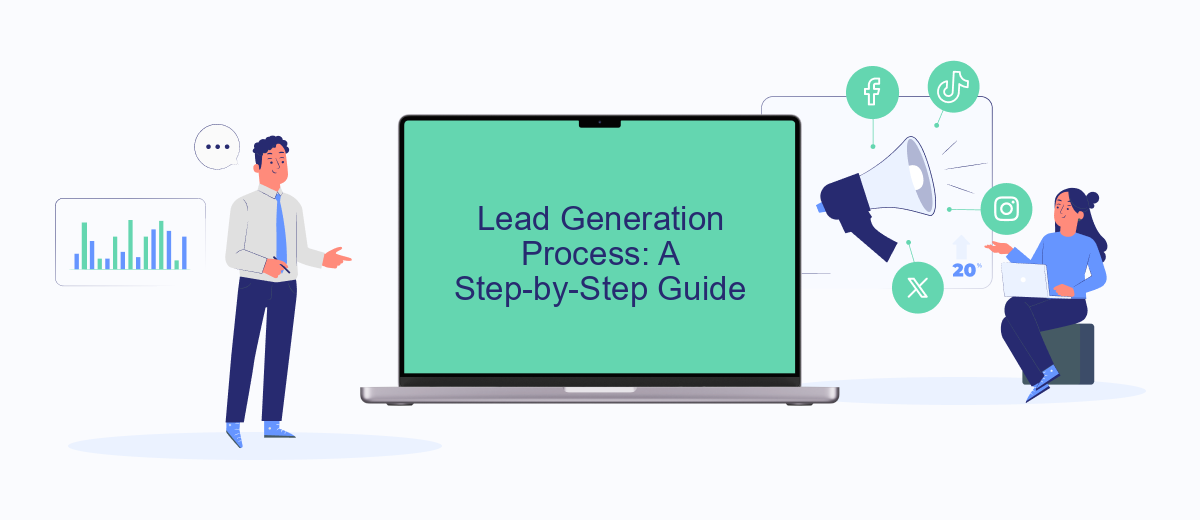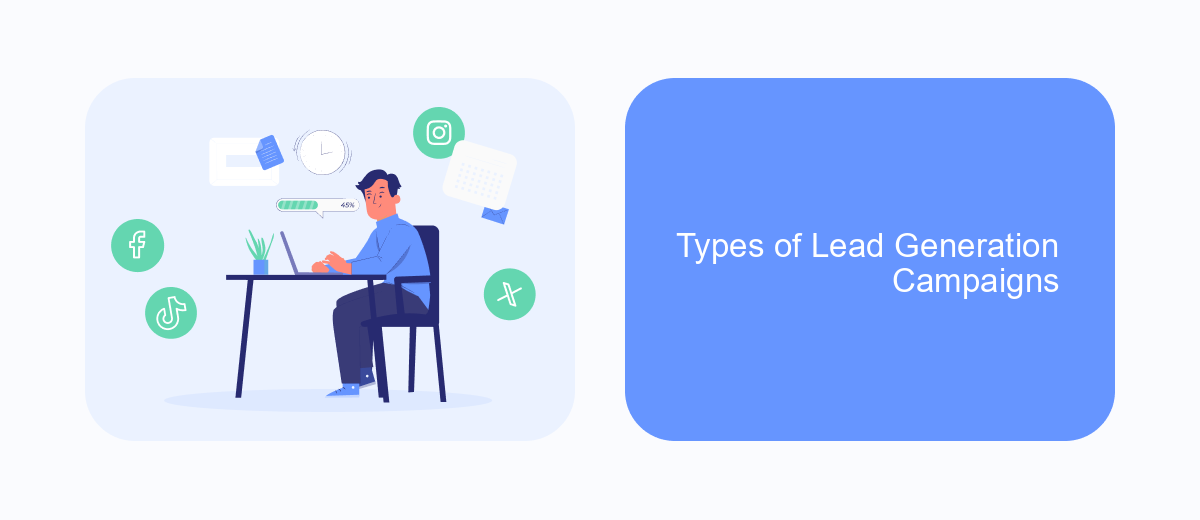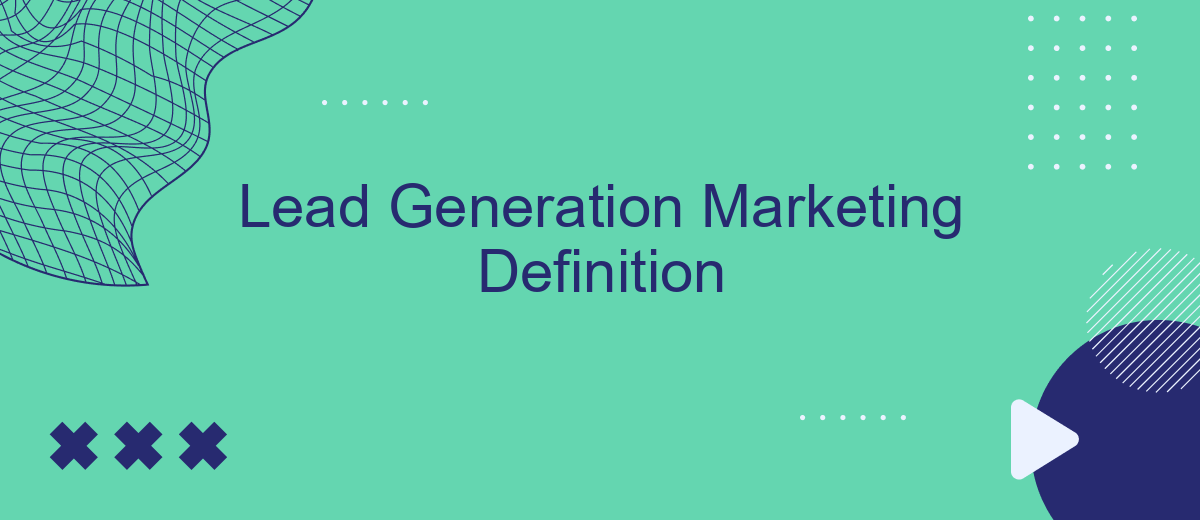Lead generation marketing is a crucial strategy for businesses aiming to attract and convert potential customers. By utilizing various techniques such as content marketing, social media, and email campaigns, companies can identify and engage prospects, nurturing them through the sales funnel. This article delves into the definition of lead generation marketing, its importance, and effective methods to drive business growth.
Lead Generation Definition: Importance and Strategies
Lead generation is a crucial aspect of any marketing strategy, as it involves attracting and converting prospects into potential customers. Understanding its importance can significantly impact a business's growth and revenue. Effective lead generation helps in building a pipeline of qualified leads, ensuring a steady flow of opportunities for sales teams to convert into customers.
- Content Marketing: Creating valuable content to attract and engage potential leads.
- SEO: Optimizing your website to rank higher in search engine results, making it easier for prospects to find you.
- Social Media Marketing: Leveraging social platforms to reach and connect with a broader audience.
- Email Marketing: Sending targeted emails to nurture and convert leads.
- Integration Tools: Using services like SaveMyLeads to automate and streamline lead capture and management processes.
Implementing these strategies effectively can lead to a more efficient lead generation process, ultimately driving higher conversion rates and business growth. Tools like SaveMyLeads can play a pivotal role by integrating various platforms and automating lead management, allowing businesses to focus on nurturing and converting leads.
Lead Generation Benefits for Businesses

Lead generation offers numerous benefits for businesses, starting with the ability to attract and convert potential customers into leads. This process helps companies build a targeted list of prospects who have shown interest in their products or services, thereby increasing the likelihood of sales. By focusing on lead generation, businesses can streamline their marketing efforts and allocate resources more efficiently, ensuring that they reach the right audience with the right message at the right time.
Additionally, lead generation enables businesses to gather valuable data about their prospects, which can be used to refine marketing strategies and improve customer engagement. Tools like SaveMyLeads can further enhance this process by automating lead capture and integration with various platforms, allowing for seamless data transfer and real-time updates. This not only saves time but also ensures that no potential lead is missed, ultimately driving higher conversion rates and fostering long-term business growth.
Lead Generation Process: A Step-by-Step Guide

Generating high-quality leads is crucial for any business looking to grow. The lead generation process involves several key steps to attract, convert, and nurture potential customers.
- Identify Your Target Audience: Understand who your ideal customers are and tailor your marketing efforts to meet their needs.
- Create Valuable Content: Develop content that addresses the pain points and interests of your target audience. This could include blog posts, eBooks, webinars, and more.
- Optimize Your Landing Pages: Ensure your landing pages are user-friendly and have clear calls-to-action (CTAs) to capture visitor information.
- Use Lead Magnets: Offer valuable resources, such as free trials or downloadable guides, in exchange for contact information.
- Implement Lead Scoring: Assign scores to leads based on their engagement and likelihood to convert, helping prioritize follow-up efforts.
- Automate Lead Management: Use tools like SaveMyLeads to integrate and automate your lead capture and nurturing processes across various platforms.
- Analyze and Refine: Continuously monitor and analyze your lead generation efforts to identify areas for improvement and optimize your strategies.
By following these steps, businesses can create a systematic approach to lead generation that maximizes their chances of converting prospects into loyal customers.
Types of Lead Generation Campaigns

Lead generation campaigns are essential for attracting and converting potential customers. These campaigns can take various forms, each tailored to meet specific marketing goals and target different audience segments.
One common type of lead generation campaign is content marketing, which involves creating valuable content to attract and engage potential leads. Another effective method is email marketing, where personalized messages are sent to prospects to nurture and convert them into customers.
- Content Marketing: Blogs, eBooks, and whitepapers
- Email Marketing: Newsletters and promotional emails
- Social Media Marketing: Ads and organic posts
- Webinars and Online Events: Live sessions and Q&A
- Pay-Per-Click (PPC) Advertising: Targeted ads on search engines
Integrating these campaigns with automation tools like SaveMyLeads can streamline the lead generation process. SaveMyLeads allows businesses to automatically capture and organize leads from various sources, ensuring no potential customer is overlooked. By leveraging such tools, companies can enhance their lead generation efforts and achieve better results.


Integration Tools for Lead Generation
Integration tools for lead generation play a crucial role in streamlining the process of capturing and managing leads. These tools help businesses automate the flow of lead information from various sources into a centralized system, enhancing efficiency and accuracy. By integrating different marketing platforms and CRM systems, companies can ensure that no lead is missed and that follow-ups are timely and personalized.
One effective solution for setting up these integrations is SaveMyLeads. This service allows users to connect various applications and automate lead data transfers without needing extensive technical knowledge. SaveMyLeads supports numerous integrations, making it easier to sync data between platforms like Facebook Lead Ads, Google Sheets, and CRM systems. Utilizing such tools not only saves time but also ensures that lead data is consistently up-to-date, enabling more effective lead nurturing and conversion strategies.
FAQ
What is lead generation marketing?
Why is lead generation important for businesses?
What are some common lead generation strategies?
How can automation tools help in lead generation?
What metrics should be tracked to measure the success of lead generation efforts?
Don't waste another minute manually transferring leads from Facebook to other systems. SaveMyLeads is a simple and effective tool that will allow you to automate this process so that you don't have to spend time on the routine. Try SaveMyLeads features, make sure that this tool will relieve your employees and after 5 minutes of settings your business will start working faster.
